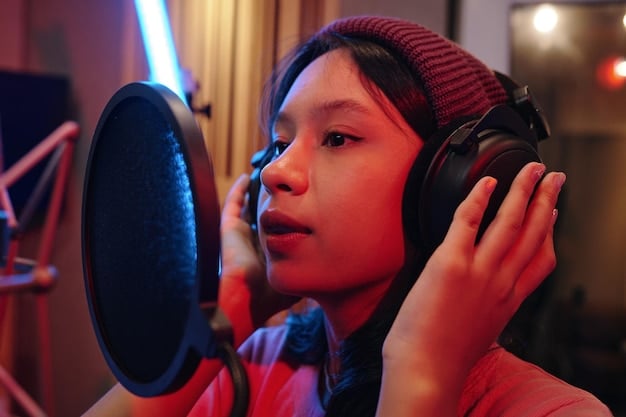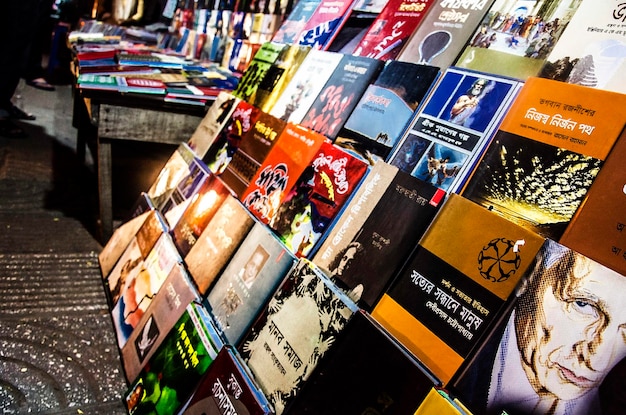The Allure of Korean Drama Soundtracks: Exploring Melody and Emotion

Korean drama soundtracks (OSTs) are integral to the viewing experience, enhancing emotional impact through diverse musical styles and contributing significantly to a drama’s overall popularity and memorability.
Korean dramas, or K-dramas, have captivated audiences worldwide with their compelling storylines, stunning visuals, and stellar performances. However, one often overlooked aspect that significantly contributes to their appeal is the music, particularly the Original Soundtracks, or OSTs. These soundtracks are meticulously crafted to enhance the emotional depth and narrative of each scene, creating an immersive experience for viewers. Let’s explore the enchanting world of K-drama OSTs and discover why they resonate so deeply with fans.
The Role of OSTs in Enhancing K-Drama Experience
Original Soundtracks (OSTs) play a pivotal role in elevating the K-drama viewing experience. More than just background music, they are artfully woven into the narrative fabric, enhancing every scene’s emotional resonance, from heart-wrenching sorrow to budding romance.
OSTs contribute to the storytelling, providing an auditory layer that deepens the connection between the viewers and the characters. By creating an atmosphere that aligns with the drama’s theme, the OSTs work synergistically to intensify every aspect of the drama.
Emotional Amplification
OSTs are essential for amplifying the emotional impact of key scenes. A well-placed song can transform a simple dialogue into a moment of profound connection. Whether it’s a ballad during a tearful breakup or an upbeat track accompanying a triumphant scene, music heightens the drama.
Narrative Storytelling
The songs in an OST often echo the themes and narratives of the drama. Lyrical content can provide insight into characters’ feelings and motivations, offering an additional layer of understanding for viewers.
- Heightening Tension: Suspenseful tracks are used to build tension in thriller or mystery dramas.
- Romantic Themes: Soft ballads and acoustic pieces create the perfect atmosphere for romantic scenes.
- Cultural Resonance: Traditional Korean instruments and melodies add a layer of authenticity, especially in historical dramas.

In conclusion, K-drama OSTs are not just soundtracks; they are integral components that enhance emotional depth and storytelling, making them essential elements of the K-drama viewing experience.
The Composition and Production of K-Drama OSTs
Creating a K-drama OST is an intricate process that involves numerous talented individuals, from composers and lyricists to singers and producers. The goal is to craft a collection of songs that capture the drama’s essence while appealing to a broad audience.
The composition of an OST begins long before the drama airs. Producers and music directors work with composers to identify the right tone and genre for each track, ensuring a harmonious blend that reflects the drama.
Collaboration of Talents
The production of K-drama OSTs involves a collaborative effort from various musical talents. Composers, lyricists, singers, and instrumentalists work together to create pieces that enhance dramatic scenes.
Diverse Musical Styles
K-drama OSTs feature a diverse range of musical genres, including pop, ballad, R&B, and orchestral pieces. Choosing the appropriate style and genre is essential to capturing the mood of the scene. Orchestral arrangements set an emotional tone while ballads and R&B songs can add a contemporary touch.
- Emotional Depth: Each song is composed to evoke specific emotions aligning with the drama’s theme.
- Genre Variety: Blending different styles broadens the audience appeal.
- Production Quality: High-quality recording & mixing ensure the songs complement visual elements.
Ultimately, composing and producing impactful K-drama OSTs involves thoughtful collaboration, musical composition, and genre variety which significantly contribute to the drama’s appeal and emotional storytelling depth.
Popular K-Drama OST Singers and Their Contributions
Many K-drama OSTs feature renowned singers who are celebrated in their own right. These artists bring their unique vocal styles and emotional depth to the tracks, making them unforgettable.
Popular OST singers play a crucial role in the success of K-drama soundtracks, contributing significantly to the drama’s overall impact and recognition.
Impactful Vocal Delivery
Singers selected for K-drama OSTs are known for delivering nuanced and emotional performances. Their ability to convey emotions through their vocals enhances the connection between the viewers and the drama.
Notable Popular Singers
These singers not only lend their voices to the OSTs but also help in promoting the drama, creating additional buzz as dedicated fans tune in; these voices are well-recognized in the K-drama community which can contribute and raise the drama’s popularity.

- Lee Seung-Cheol: Known for hits like “My Love” from “Phoenix.”
- Baek Ji-young: Iconic voice behind “That Woman” from “Secret Garden.”
- Gummy: Famous for “You Are My Everything” from “Descendants of the Sun.”
In summary, the contributions of popular singers to K-drama OSTs are essential in enhancing the emotional narratives, fostering recognition, and broadening overall appeal, contributing significantly to the drama’s success.
The Influence of OSTs on K-Drama Popularity
OSTs have a significant impact on the popularity of K-dramas. A well-received soundtrack can boost a drama’s viewership and create a lasting impression on audiences.
OSTs often become popular independently of the dramas they accompany, attracting listeners who may not even watch the show. This increased visibility can then lead to more viewers tuning in.
Cross-Cultural Appeal
High-quality OSTs contribute to the cross-cultural appeal of K-dramas. Songs with universal themes and catchy melodies resonate with audiences regardless of their cultural background, fostering a broader fan base.
Marketing and Promotion
OSTs are essential marketing tools. Release of singles ahead of the drama broadcast generates excitement, increases viewership and generates buzz. Music videos featuring scenes from the drama also serve as trailers, enticing viewers to watch.
The influence of OSTs on K-drama popularity is undeniable, enhancing viewership, fostering emotional connections, and serving as effective marketing tools that significantly contribute to the success of K-dramas worldwide.
Memorable K-Drama OSTs and Their Impact
K-dramas are known for their iconic soundtracks that leave a lasting impact on viewers. These memorable OSTs often become synonymous with the drama itself, evoking strong emotional responses each time they are heard.
Let’s explore some of the most memorable K-drama OSTs and the impact they have had on their respective dramas and audiences.
“Guardian: The Lonely and Great God” (Goblin)
The Goblin OST is highly acclaimed, featuring tracks like “Stay With Me” by Chanyeol and Punch and “Beautiful” by Crush. Their popularity boosted the drama’s appeal & is known as one of the most iconic K-dramas.
“Descendants of the Sun”
Featuring Gummy’s “You Are My Everything” and Yoon Mi-rae’s “Always,” this OST was incredibly successful. The songs captured romantic essence, drawing viewers into the storyline; its widespread recognition & emotional depth resonated deeply with audiences.
- Lasting Impressions: The emotional connection created by these iconic themes leaves lasting memories.
- Cultural Impact: They are recognized across media as popular K-drama themes, contributing to the culture significantly and boosting viewership.
- Rediscovering Shows: OSTs serve as cultural touchstones, sparking nostalgia and drawing new viewers to familiar series.
Concluding, memorable K-drama OSTs create significant impact to viewers and cultural appreciation of the music, greatly enhancing the experience and appeal of the shows.
The Future of K-Drama Soundtracks
The future of K-drama soundtracks looks promising as the industry continues to evolve and experiment with new sounds and technologies.
As K-dramas gain even more global recognition, the demand for high-quality OSTs that can resonate with diverse audiences will only increase.
Innovative Musical Approaches
Future OSTs are likely to incorporate increasingly diverse musical styles, blending traditional Korean elements with global music trends. Producers may also experiment with interactive elements, such as allowing viewers to influence the soundtrack through real-time feedback.
Global Collaborations
Collaborations between Korean artists and international musicians are expected to become more common, bringing fresh perspectives and broader appeal to K-drama OSTs.
- Musical Evolution: Fusion genres blend traditional Korean sounds with contemporary music trends.
- Technological Integration: Interactive soundtracks enhance viewer engagement.
- Global Outreach: Collaboration with the international music scene increases the popularity of K-drama soundtracks globally.
Concluding, the future of K-drama soundtracks is poised for innovation, offering new immersive listening experiences, strengthening cross-cultural musical links and broadening the overall appeal of K-dramas.
| Key Point | Brief Description |
|---|---|
| 🎵 Emotional Depth | OSTs amplify emotions in K-dramas, enhancing viewer connection. |
| 🎤 Popular Singers | Iconic voices like Gummy and Baek Ji-young boost OST recognition. |
| 📈 Cultural Impact | OSTs contribute to cross-cultural appeal and marketing. |
| ✨ Future Trends | Expect genre fusion, interactive elements, and global collaborations. |
Frequently Asked Questions (FAQs)
▼
OSTs enhance the emotional depth and narrative, creating a deeply immersive viewing experience. They amplify key scenes and provide insight into characters motivations, making the drama more impactful.
▼
Several artists stand out, including Gummy known for “You Are My Everything,” Baek Ji-young with “That Woman,” and Lee Seung-cheol for “My Love.” Their unique vocal styles greatly contribute to OSTs’ success.
▼
OSTs can significantly boost a drama’s viewership by attracting listeners who may not initially watch the show. They serve as effective marketing tools & enhance the drama’s emotional resonance and memorability.
▼
K-drama OSTs feature a wide range of genres, including pop, ballads, R&B, and orchestral pieces. This diversity enables the soundtracks to cater to various scenes and emotions, appealing to a broad audience.
▼
The future holds innovative musical approaches, such as fusion genres mixing traditional korean sounds with global music. Expect global collaborations, and the integration of technology for interactive viewer experiences.
Conclusion
In conclusion, K-drama OSTs are more than just background music; they are integral components that significantly enhance the viewing experience. From amplifying emotions to boosting popularity, these soundtracks play a pivotal role in the success and impact of K-dramas worldwide. As the industry evolves, the future of K-drama OSTs promises even more innovation and global appeal, continuing to captivate audiences for years to come.





